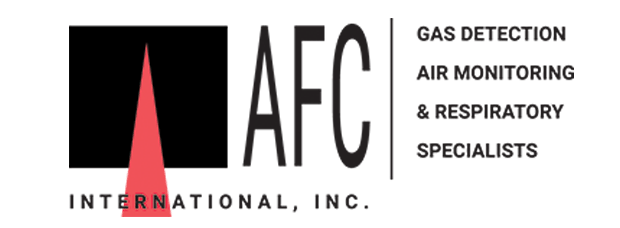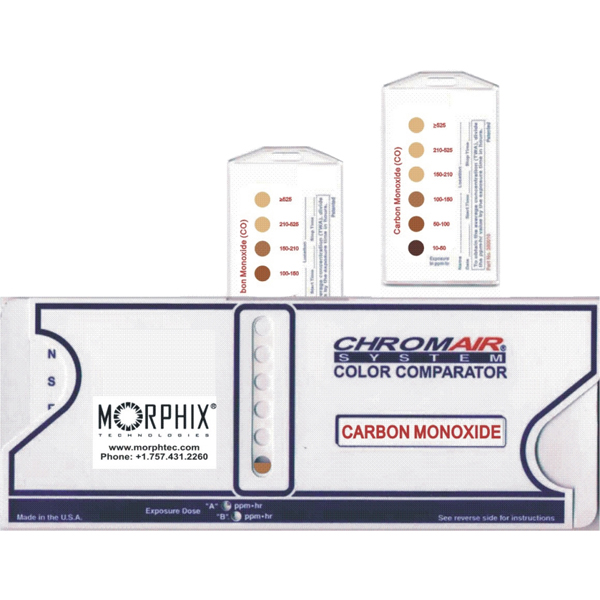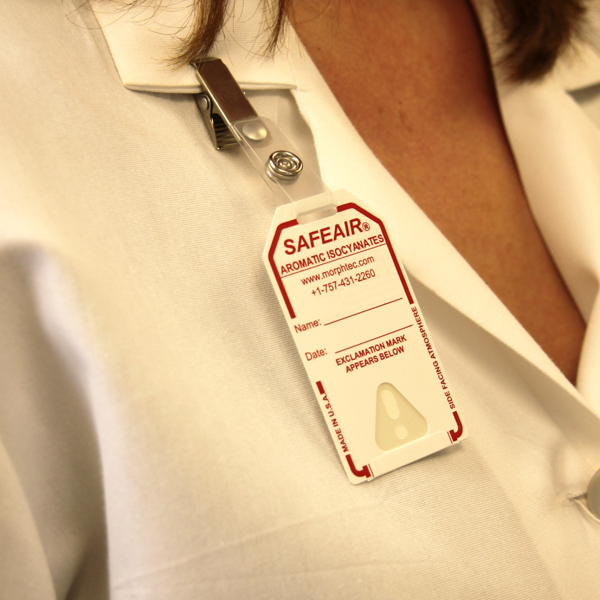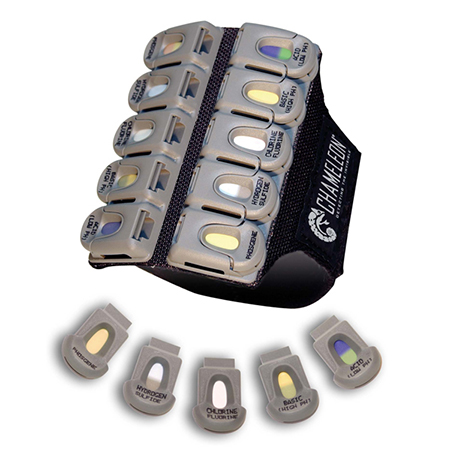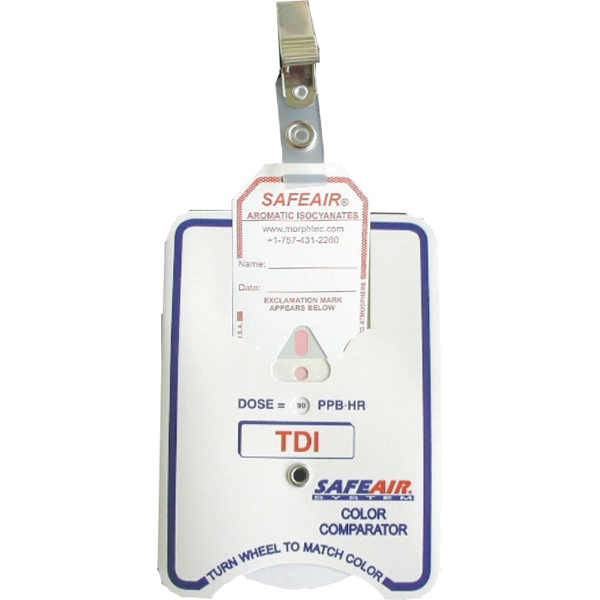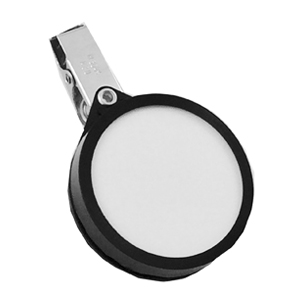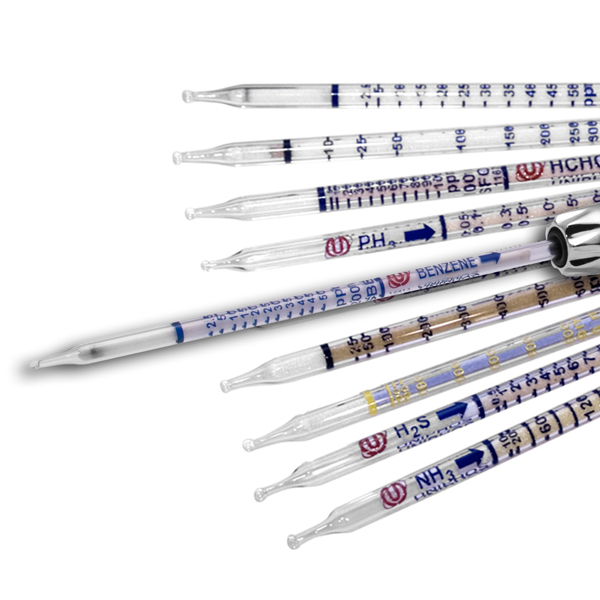Description
Description
The ChromAir badge is a patented direct-read colorimetric device to indicate the presence of mercury at relevant exposure doses. The badge is constructed from five cells attached on one side to a colorimetric sensor and on the other side to a series of different diffusive resistances. Mercury vapor diffuses through the different diffusive resistances and reacts with the sensor, producing color change from white to purple. The color produced on the sensor is a direct measure of the exposure dose. Observe the formation of the threshold color on the individual cell and read the corresponding exposure dose.
Mercury is a silver-white, heavy, mobile, liquid metal with no specific odor. It is readily absorbed through the skin, the gastrointestinal tract and the respiratory tract. Chronic exposure may cause inflammation of the mouth and gums, kidney damage, muscle tremors, depression and nervousness. Mercury spills and heated mercury are particularly hazardous. OSHA PEL (permissible exposure limit) in the general industry for mercury is 1 mg/10 m3(TWA). NIOSH REL (recommended exposure limit) for mercury is 0.05 mg/m3(TWA). Mercury is used in barometers, thermometers, hydrometers, pyrometers, and in mercury arc lamps producing ultraviolet rays. It is also used in pharmaceuticals, agricultural chemicals and antifouling paints.
